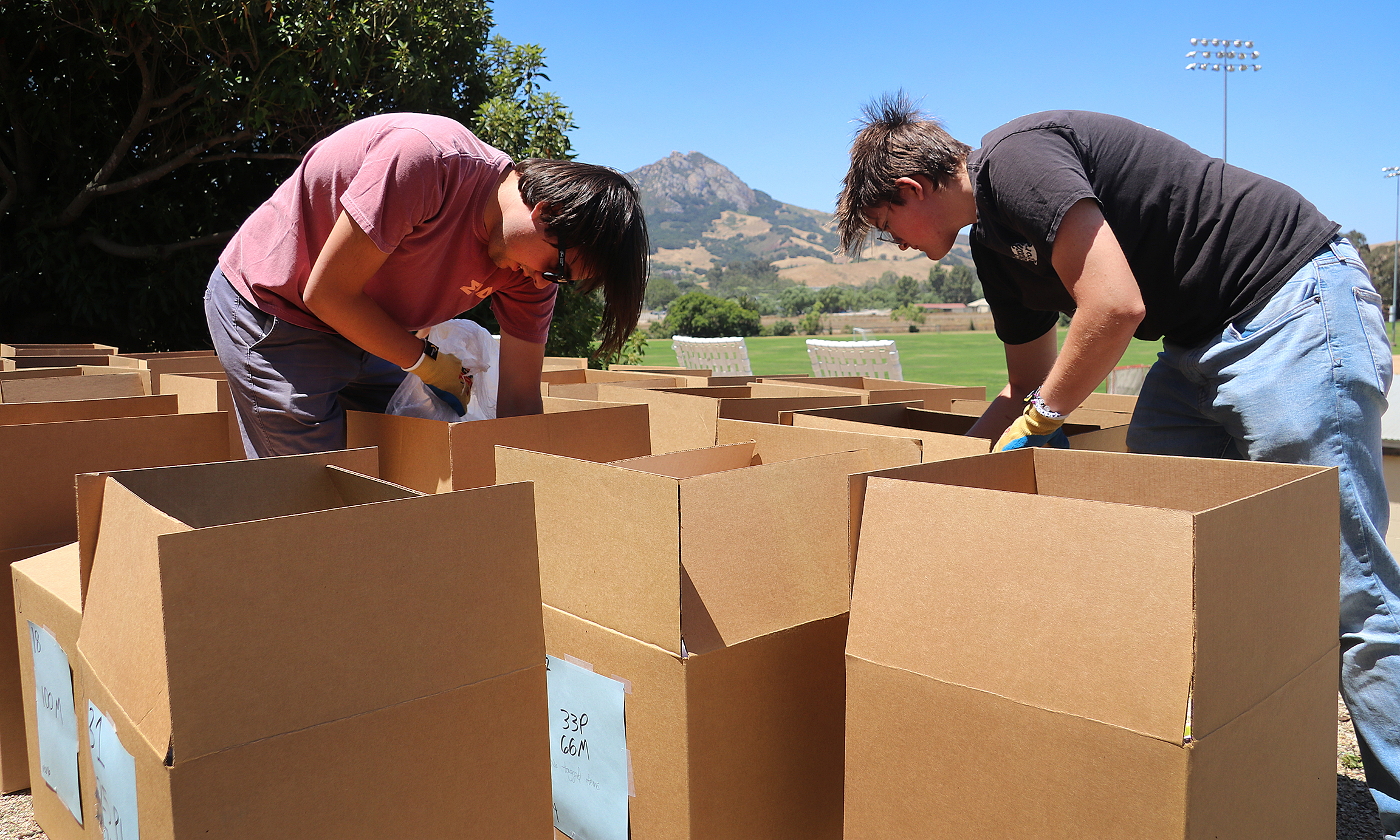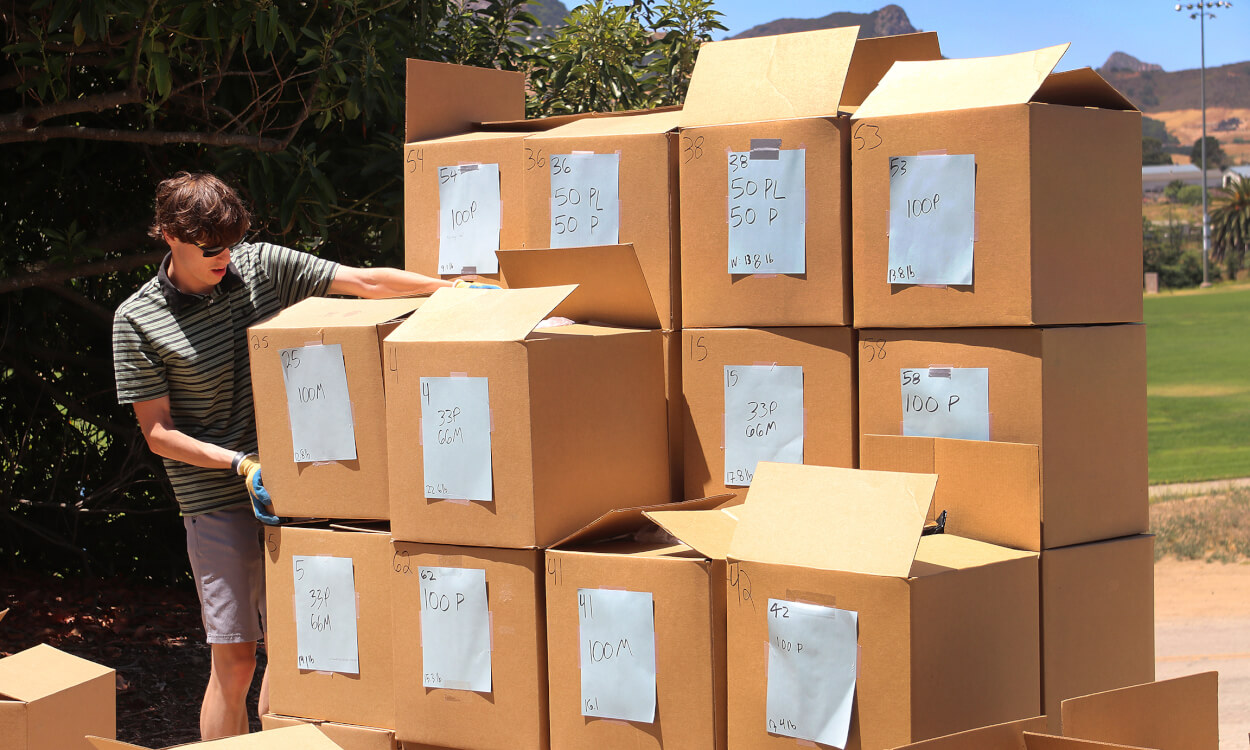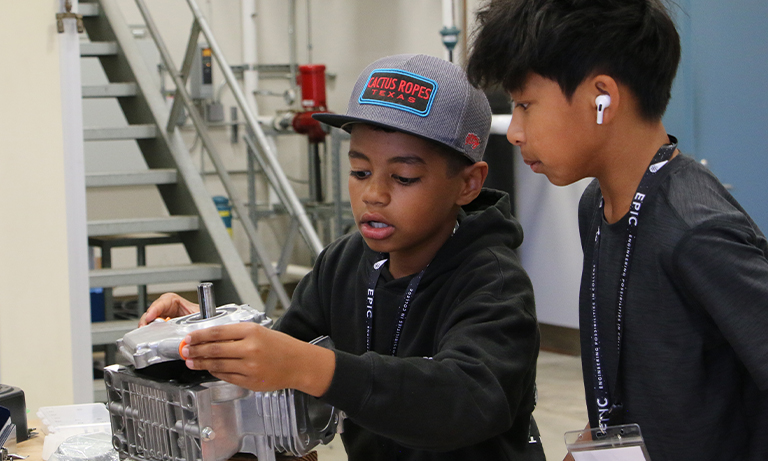Research project uses RFID technology to find trashed lithium-ion batteries
Radio frequency identification technologies used in pet microchips and touchless hotel card keys may help prevent a persistent, destructive and growing problem of the cordless computer and smartphone age — fires ignited in recycling waste by improperly discarded lithium-ion batteries.
Industrial and manufacturing engineering Professor Tali Freed and a group of Cal Poly engineering students are studying the use of radio frequency identification, or RFID, to locate and identify lithium-ion batteries — the kind common in laptop computers, tablets, electric bicycles and cordless power tools — in highly flammable recycling material.
Freed said the batteries can chemically combust if they are physically damaged or exposed to heat. If they can be located and separated from the other refuse early in the recycling process, then the surprising number of battery-lit fires at material recovery facilities, or MRFs, can be reduced significantly.

“The problem is that lithium-ion batteries can easily catch fire if they’re crushed by impact. The likelihood of fire is even higher under a combination of impact and heat,” Freed said. “These fires have claimed worker lives and caused many millions of dollars in damages all over the country. The average-sized MRF may have one or two fires each week.”
Freed and students Jenna Vokolek (engineering management), Samuel Christy (industrial engineering), Nikolai Prutow (manufacturing engineering) and Aurora Geisen (manufacturing engineering) worked at the Cal Poly Center for Global Automatic Identification Technologies (PolyGAIT) near the Cal Poly Hangar to pack dozens of cardboard boxes with recycling material and mix in several disabled lithium-ion batteries that were marked with RFID tags. The boxes were then scanned by a passive RFID reader to locate the batteries hidden amid the wastepaper, cardboard, plastic bottles and metal cans.

Freed used an analogy about microchips in pets to explain how RFID relates to the project.
“When a cat or dog disappears and is later found and taken to a vet, the vet puts an RFID reader near the back of the neck where the chip is located and it reads a number,” she said. “That number is on a computer database that is a registry of the entire nation. And that’s how the owner of the pet is identified. Potentially, a similar but longer-range method can be used to find and identify RFID-tagged lithium-ion batteries;the scanner reads the numbers off the tags.”
Early returns on using RFID, which has been employed for the last couple of decades by industry in a wide range of applications, show that streamlining supply chain efficiency and opening hotel room doors had positive impacts as they provide low-cost solutions to problems.
Freed said if the study results in a proof of concept that will be adopted by battery manufacturers and the recycling industry, each lithium-ion battery in the future will have its own chip, and there may be a way to identify batteries prior to them causing fires and damage.
“There could be scanners at every step of the recycling process, from curbside to the trucks to the tipping floor at the MRF where most of the fires start,” she said. “Right now, these MRFs fight the problem with a system of sensors and sprayers that put out the fires. It would be much better to prevent the fires from happening at all.”
Where to Recycle Lithium-Ion Batteries
Lithium-ion and other rechargeable batteries contain metals and chemicals that may harm the environment and should not be placed in curbside recycling bins. For information on how and where to recycle rechargeable and nonrechargeable batteries in San Luis Obispo County, visit: https://www.call2recycle.org/.
By Dennis Steers


